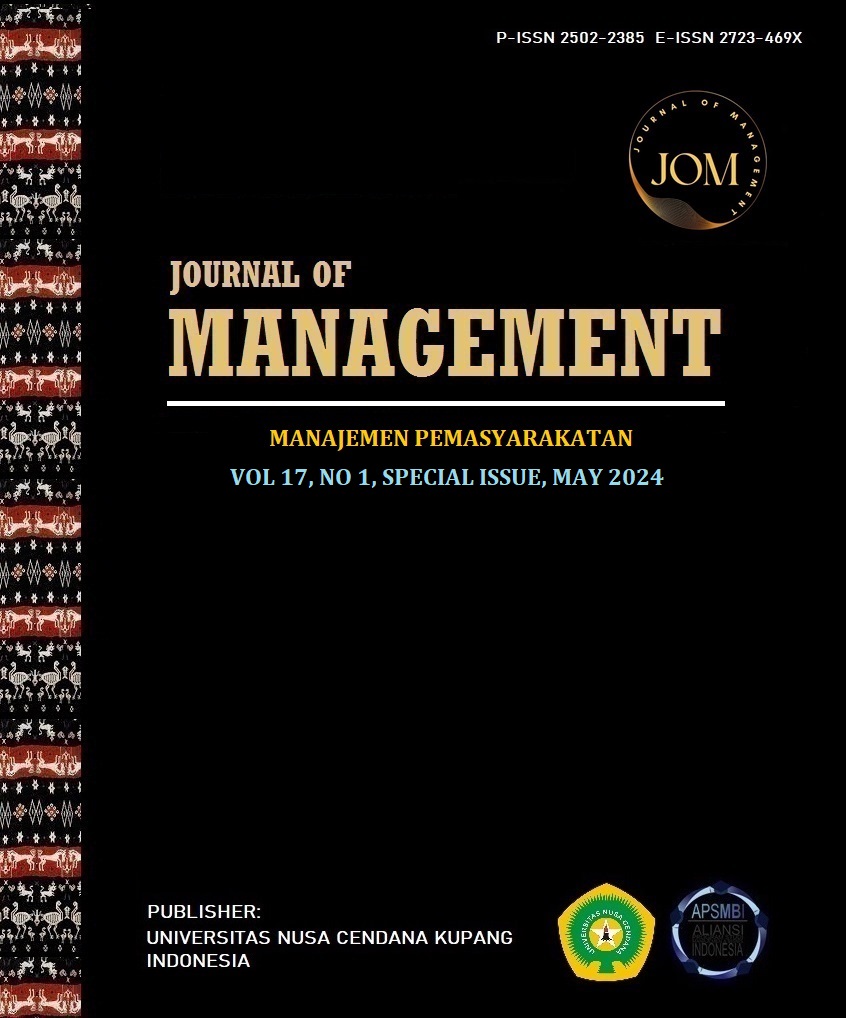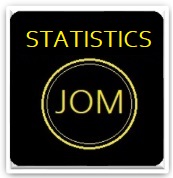PENGARUH ELECTRONIC WORD OF MOUTH TERHADAP PURCHASE INTENTION PRODUK KARYA NARAPIDANA
(Studi Pada Produk Karya Narapidana di Lembaga Pemasyarakatan Kelas IIB Tasikmalaya)
Abstract
This study aims to see whether electronic word of mouth has a direct impact on public buying interest in products made by prisoners at the Lembaga Pemasyarakatan Tasikmalaya Class IIB. This research method uses quantitative methods with a population and sample of 108 Instagram social media followers where the entire population is sampled. There are a total of 9 statement items to be questioned and distributed to all officers. The results of the determination test analysis show that the electronic word-of-mouth variable has an influence of 21% on the interest in buying products made by prisoners. This research hypothesis concludes that there is an influence of electronic word of mouth on the interest in buying products made by prisoners of Lembaga PemasyarakatanTasikmalaya Class IIB.
Keywords: Marketing; Purchase Interest; Products; Prisoners
Downloads
References
Abed, S. (2018). An Empirical Examination Of Instagram As An S-Commerce Channel. Journal Of Advances In Management Research, 15(2), 146–160. Https://Doi.Org/10.1108/JAMR-05-2017-0057
APJII. (2020). Laporan Survei Internet APJII 2019 – 2020. Asosiasi Penyelenggara Jasa Internet Indonesia, 2020, 1–146. Https://Apjii.Or.Id/Survei
APJII. (2022). Profil Internet Indonesia 2022. Apji.Or.Od, June, 10. Apji.Or.Id
Assael, H. (2004). Consumer Behavior A Strategic Approach. Houghton Mifflin Company.
Bambauer-Sachse, S., & Mangold, S. (2011). Brand Equity Dilution Through Negative Online Word-Of-Mouth Communication. Journal Of Retailing And Consumer Services, 18(1), 38–45. Https://Doi.Org/10.1016/J.Jretconser.2010.09.003
Bashar, A., Ahmad, I., & Wasiq, M. (2012). Effectiveness Of Social Media As A Marketing Tool: An Empirical Study. International Journal Of Marketing, Financial Services & Management Research, 1(11), 3622. Www.Indianresearchjournals.Com
Bernard J. Jansen. (2009). Twitter Power:Tweets As Electronicword Of Mouth. Journal Of The American Society For Information Science And Technology, 64(July), 1852–1863. Https://Doi.Org/10.1002/Asi
Creswell, J. W. (2017). Research Design: Pendekatan Kualitatif, Kuantitatif, Dan Mixed (Edisi Ketiga). Pustaka Pelajar.
Daugherty, T., & Hoffman, E. (2014). Ewom And The Importance Of Capturing Consumer Attention Within Social Media. In Journal Of Marketing Communications (Vol. 20, Issues 1–2, Pp. 82–102). Taylor & Francis.
Https://Doi.Org/10.1080/13527266.2013.797764
Elseidi, R. I., & El-Baz, D. (2016). Electronic Word Of Mouth Effects On Consumers’ Brand Attitudes, Brand Image. International Conference On Restructuring Of The Global Economy (ROGE), University Of Oxford, UK, 7(5), 268–276.
Erkan, I., & Evans, C. (2016). The Influence Of Ewom In Social Media On Consumers’ Purchase Intentions: An Extended Approach To Information Adoption. Computers In Human Behavior, 61, 47–55.
Https://Doi.Org/10.1016/J.Chb.2016.03.003
Gupta, P., & Harris, J. (2010). How E-WOM Recommendations Influence Product Consideration And Quality Of Choice: A Motivation To Process Information Perspective. Journal Of Business Research, 63(9–10), 1041–1049. Https://Doi.Org/10.1016/J.Jbusres.2009.01.015
Hasan A. (2010). Marketing Dari Mulut Ke Mulut, Cetakan 1 (G. Wijaya (Ed.); 1st Ed.). Media Pressindo.
Kotler, P. (2005). Manajemen Pemasaran (Ed. 11). Indeks Mulia Pustaka, Jakarta.
Krejcie, R., V.Morgan, & W., D. (1996). (1970) “Determining Sample Size For Research Activities”, Educational And Psychological Measurement. International Journal Of Employment Studies, 18(1), 89–123.
Kunja, S. R., & GVRK, A. (2020). Examining The Effect Of Ewom On The Customer Purchase Intention Through Value Co-Creation (VCC) In Social Networking Sites (Snss): A Study Of Select Facebook Fan Pages Of Smartphone Brands In India. Management Research Review, 43(3), 245–269. Https://Doi.Org/10.1108/MRR-04-2017-0128
Le-Hoang, P. V., Nguyen, G. T., Phung, H. T. T., Ho, V. T., & Phan, N. T. (2020). The Relationship Between Brand Equity And Intention To Buy: The Case Of Convenience Stores. Independent Journal Of Management & Production, 11(2), 434. Https://Doi.Org/10.14807/Ijmp.V11i2.1062
Nyoko, A. E., & Semuel, A. D. D. (2021). Pengaruh Electronic Word of Mouth (E-WOM) di media sosial Facebook terhadap keputusan pembelian. Journal of Management: Small and Medium Enterprises (SMEs), 14(1), 63-76.
Pitta, D. A., & Fowler, D. (2005). Online Consumer Communities And Their Value To New Product Developers. Journal Of Product & Brand Management, 14(5), 283–291. Https://Doi.Org/10.1108/10610420510616313
Prasad, S., Gupta, I. C., & Totala, N. K. (2017). Social Media Usage, Electronic Word Of Mouth And Purchase-Decision Involvement. In Asia-Pacific Journal Of Business Administration (Vol. 9, Issue 2). Https://Doi.Org/10.1108/APJBA-06-2016-0063
Pratama, I. P. A. E. (2014). Sistem Informasi Dan Implementasinya : Teori & Konsep Sistem Informasi Disertai Berbagai Contoh Praktiknya Menggunakan Perangkat Lunak Open Source. Informatika.
Priyono. (2008). Metode Penelitian Kuantitatif (T. Chandra (Ed.)). Zifatama Publishing.
Sen, S., & Lerman, D. (2007). Why Are You Telling Me This? An Examination Into Negative Consumer Reviews On The Web. Journal Of Interactive Marketing, 21(3), 2–20. Https://Doi.Org/10.1002/Dir
Shukla, P. (2011). Impact Of Interpersonal Influences, Brand Origin And Brand Image On Luxury Purchase Intentions: Measuring Interfunctional Interactions And A Cross-National Comparison. Journal Of World Business, 46(2), 242–252. Https://Doi.Org/10.1016/J.Jwb.2010.11.002
Spss-Tutorials.Com. (2019). SPSS Tutorials SPSS Kolmogorov-Smirnov Test For Normality.
Teng, S., Khong, K. W., Chong, A. Y. L., & Lin, B. (2017). Examining The Impacts Of Electronic Word-Of-Mouth Message On Consumers’ Attitude. Journal Of Computer Information Systems, 57(3), 238–251.

 Aqshal Surya Suhada(1*)
Aqshal Surya Suhada(1*)



